AWS News Blog
New – UDP Load Balancing for Network Load Balancer
|
|
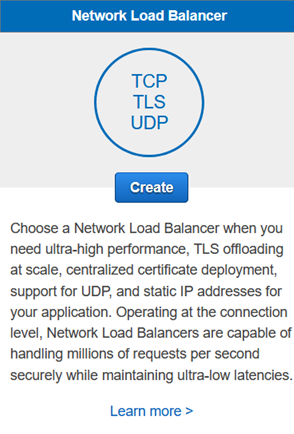 The Network Load Balancer is designed to handle tens of millions of requests per second while maintaining high throughput at ultra low latency, with no effort on your part (read my post, New Network Load Balancer – Effortless Scaling to Millions of Requests per Second to learn more).
The Network Load Balancer is designed to handle tens of millions of requests per second while maintaining high throughput at ultra low latency, with no effort on your part (read my post, New Network Load Balancer – Effortless Scaling to Millions of Requests per Second to learn more).
In response to customer requests, we have added several new features since the late-2017 launch, including cross-zone load balancing, support for resource-based and tag-based permissions, support for use across an AWS managed VPN tunnel, the ability to create a Network Load Balancer using the AWS Elastic Beanstalk Console, support for Inter-Region VPC Peering, and TLS Termination.
UDP Load Balancing
Today we are adding support for another frequent customer request, the ability to load balance UDP traffic. You can now use Network Load Balancers to deploy connectionless services for online gaming, IoT, streaming, media transfer, and native UDP applications. If you are hosting DNS, SIP, SNMP, Syslog, RADIUS, and other UDP services in your own data center, you can now move the services to AWS. You can also deploy services to handle Authentication, Authorization, and Accounting, often known as AAA.
You no longer need to maintain a fleet of proxy servers to ingest UDP traffic, and you can now use the same load balancer for both TCP and UDP traffic. You can simplify your architecture, reduce your costs, and increase your scalability.
Creating a UDP Network Load Balancer
I can create a Network Load Balancer with UDP support using the Console, CLI (create-load-balancer), API (CreateLoadBalancer), or a CloudFormation template (AWS::ElasticLoadBalancingV2::LoadBalancer), as usual. The console lets me choose the desired load balancer; I click the Create button underneath Network Load Balancer:
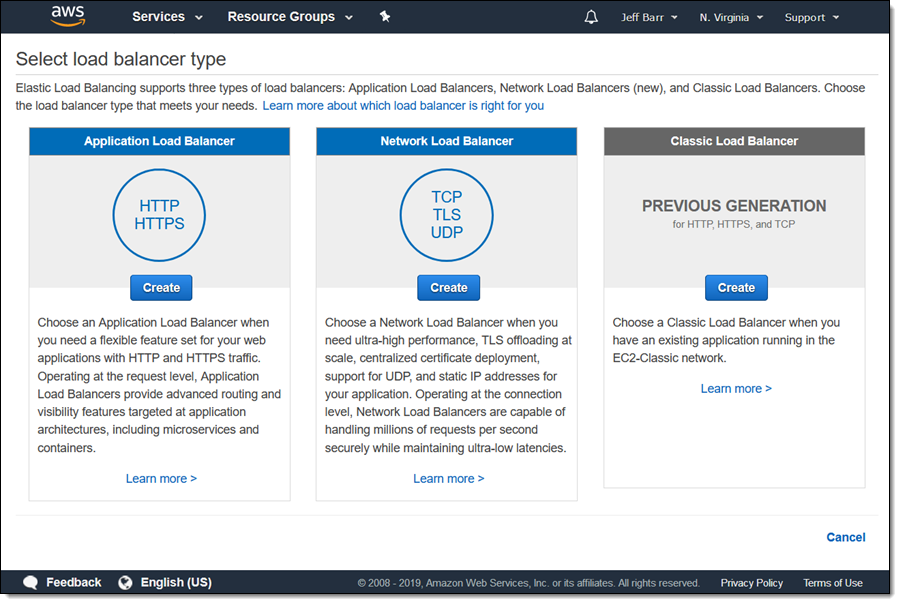
I name my load balancer, choose UDP from the protocol menu, and select a port (514 is for Syslog):
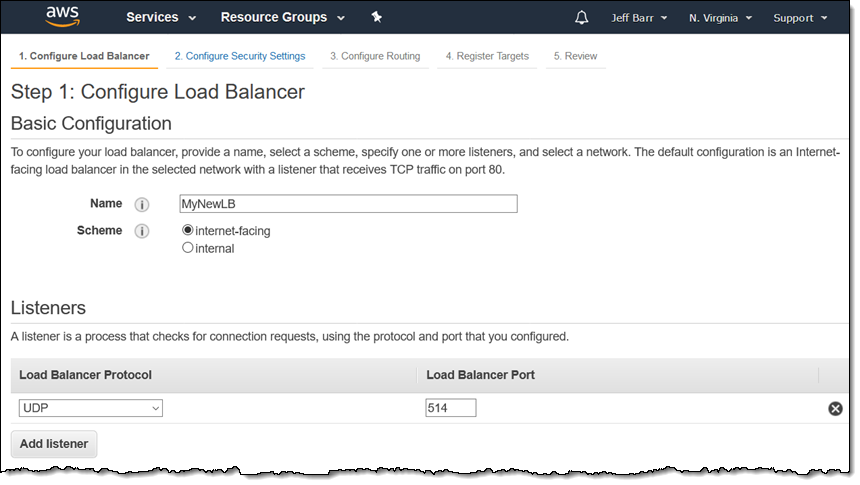
I already have suitable EC2 instances in us-east-1b and us-east-1c so I’ll use those AZs:
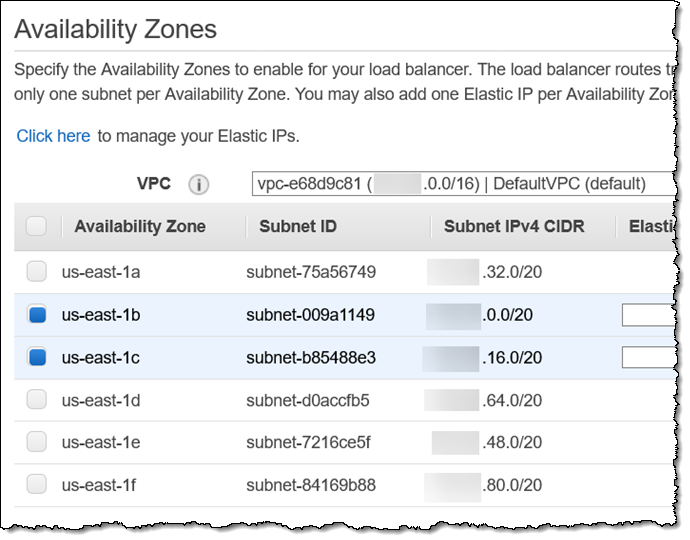
Then I set up a target group for the UDP protocol on port 514:

I choose my instances and click Add to registered:
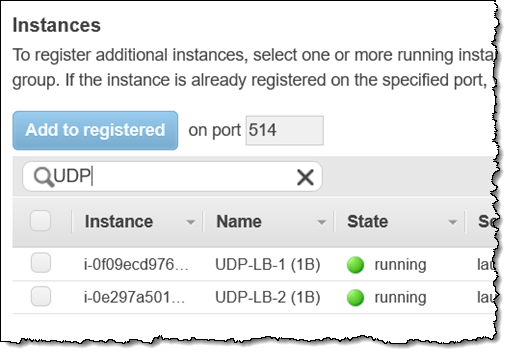
I review my settings on the next page, and my new UDP Load Balancer is ready to accept traffic within a minute or so (the state starts out as provisioning and transitions to active when it is ready):
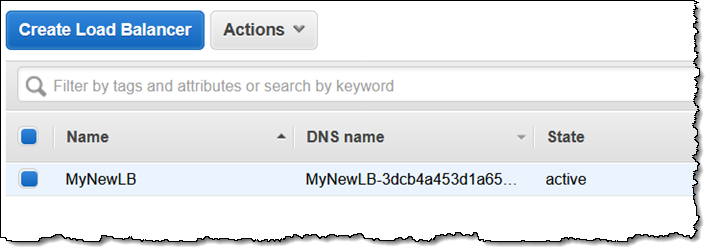
I’ll test this out by configuring my EC2 instances as centralized Syslogd servers. I simply edit the configuration file (/etc/rsyslog.conf) on the instances to make them listen on port 514, and restart the service:
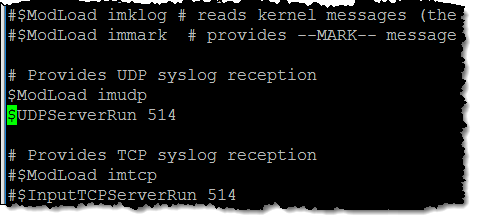
Then I launch another EC2 instance and configure it to use my NLB endpoint:

And I can see log entries in my servers (ip-172-31-29-40 is my test instance):

I did have to do make one small configuration change in order to get this to work! Using UDP to check on the health of a service does not really make sense, so I clicked override and specified a health check on port 80 instead:
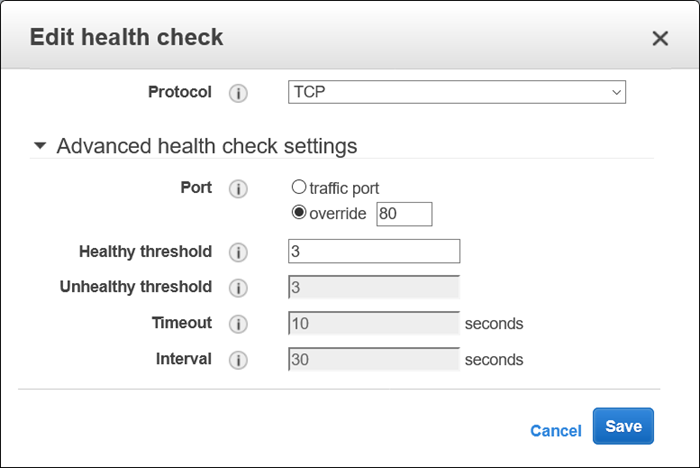
In a real-world scenario you would want to build a TCP-style health check into your service, of course. And, needless to say, I would run a custom implementation of Syslog that stores the log messages centrally and in a highly durable form.
Things to Know
Here are a couple of things to know about this important new NLB feature:
Supported Targets – UDP on Network Load Balancers is supported for Instance target types (IP target types and PrivateLink are not currently supported).
Health Checks – As I mentioned above, health checks must be done using TCP, HTTP, or HTTPS.
Multiple Protocols – A single Network Load Balancer can handle both TCP and UDP traffic. You can add another listener to an existing load balancer to gain UDP support, as long as you use distinct ports. In situations such as DNS where you need support for both TCP and UDP on the same port, you can set up a multi-protocol target group and a multi-protocol listener (use TCP_UDP for the listener type and the TargetGroup).
New CloudWatch Metrics – The existing CloudWatch metrics (ProcessedBytes, ActiveFlowCount, and NewFlowCount) now represent the aggregate traffic processed by the TCP, UDP, and TLS listeners on a given Network Load Balancer.
Available Now
This feature is available now and you can start using it today in all commercial AWS Regions. For pricing, see the Elastic Load Balancing Pricing page.
— Jeff;
